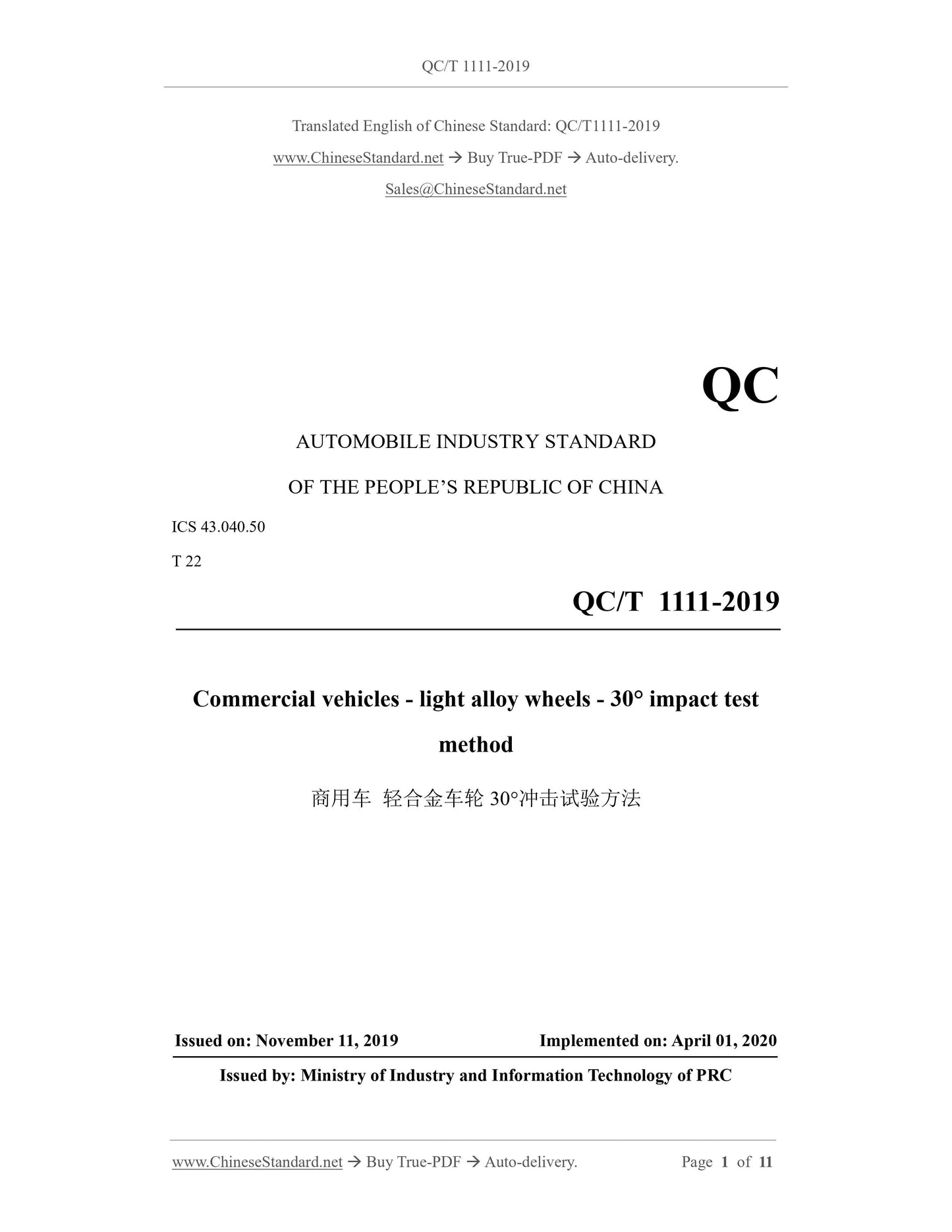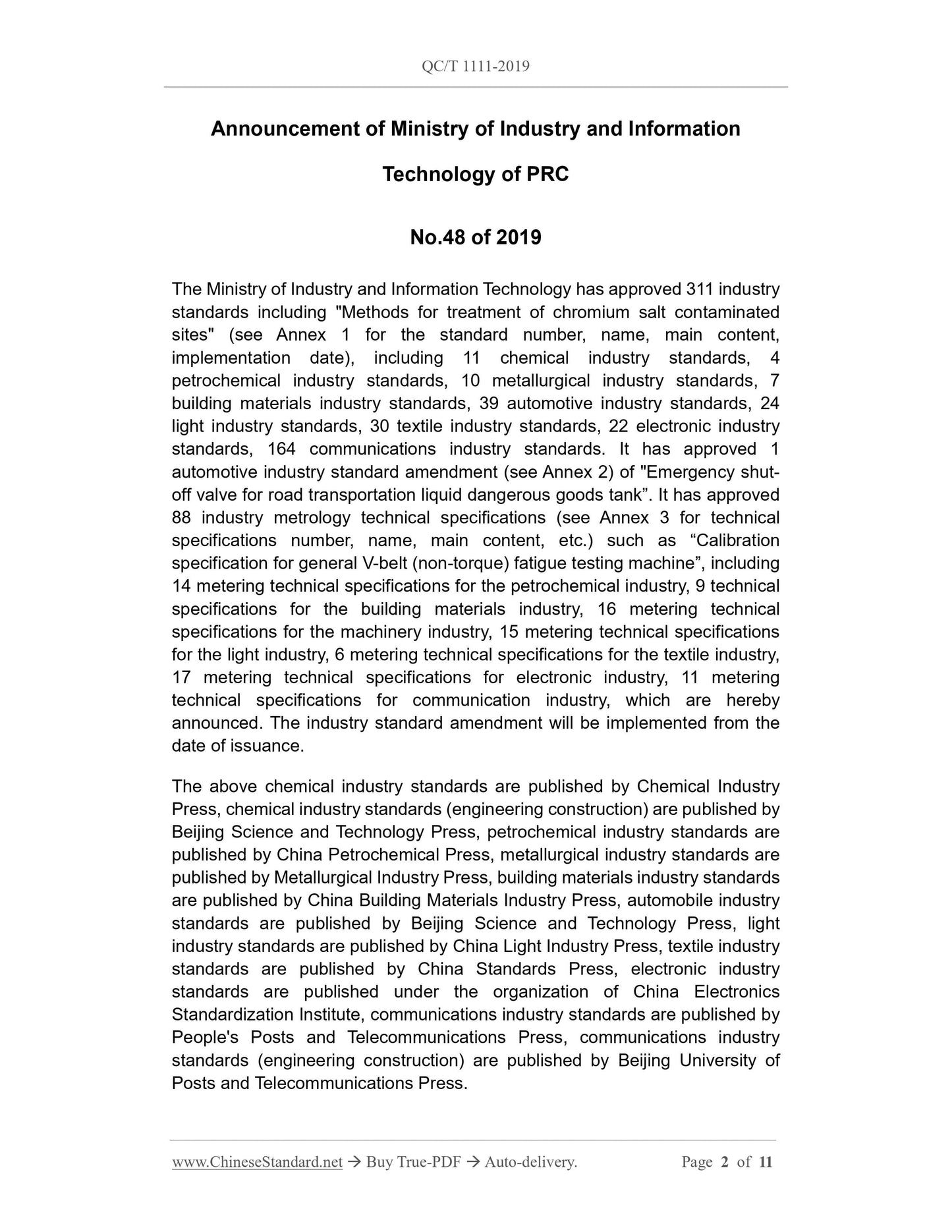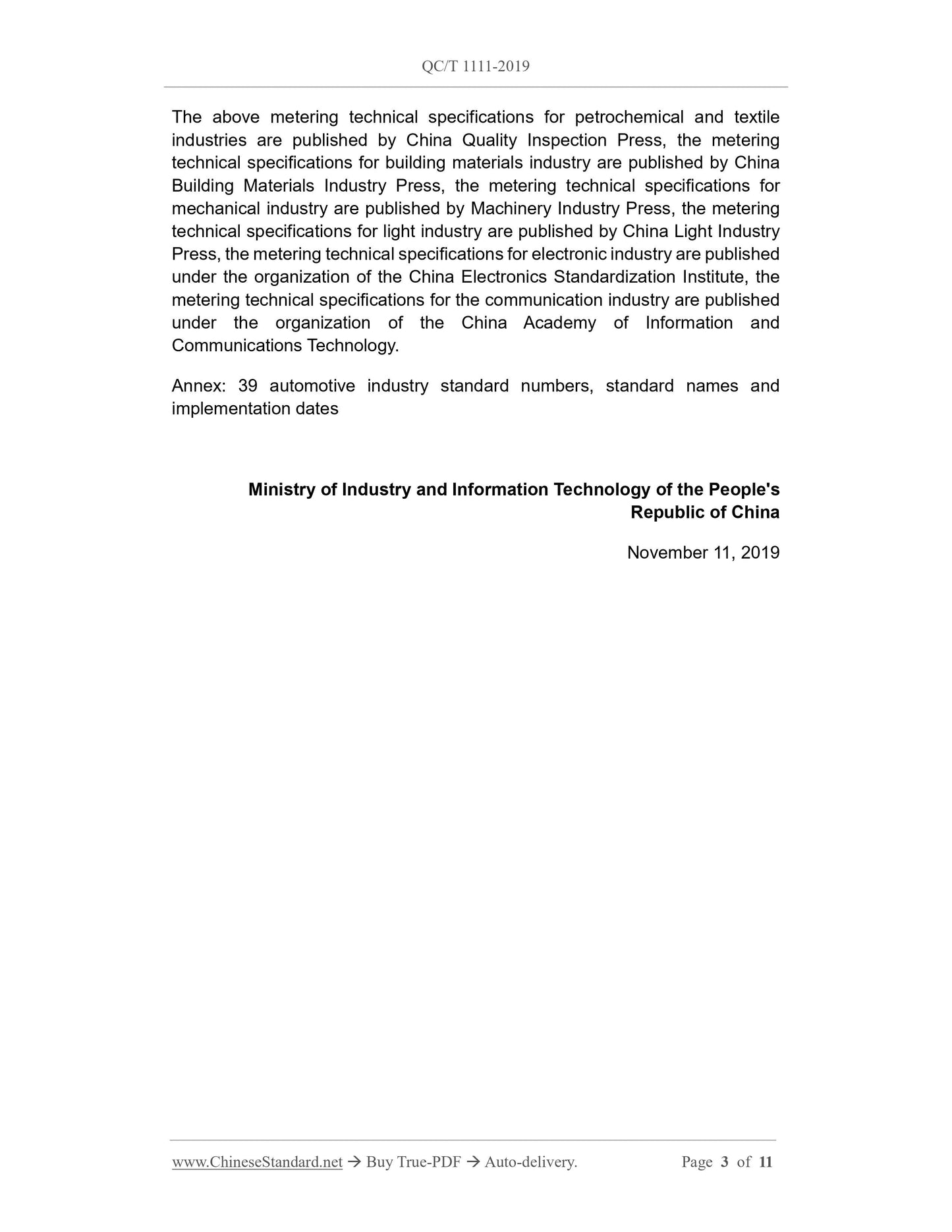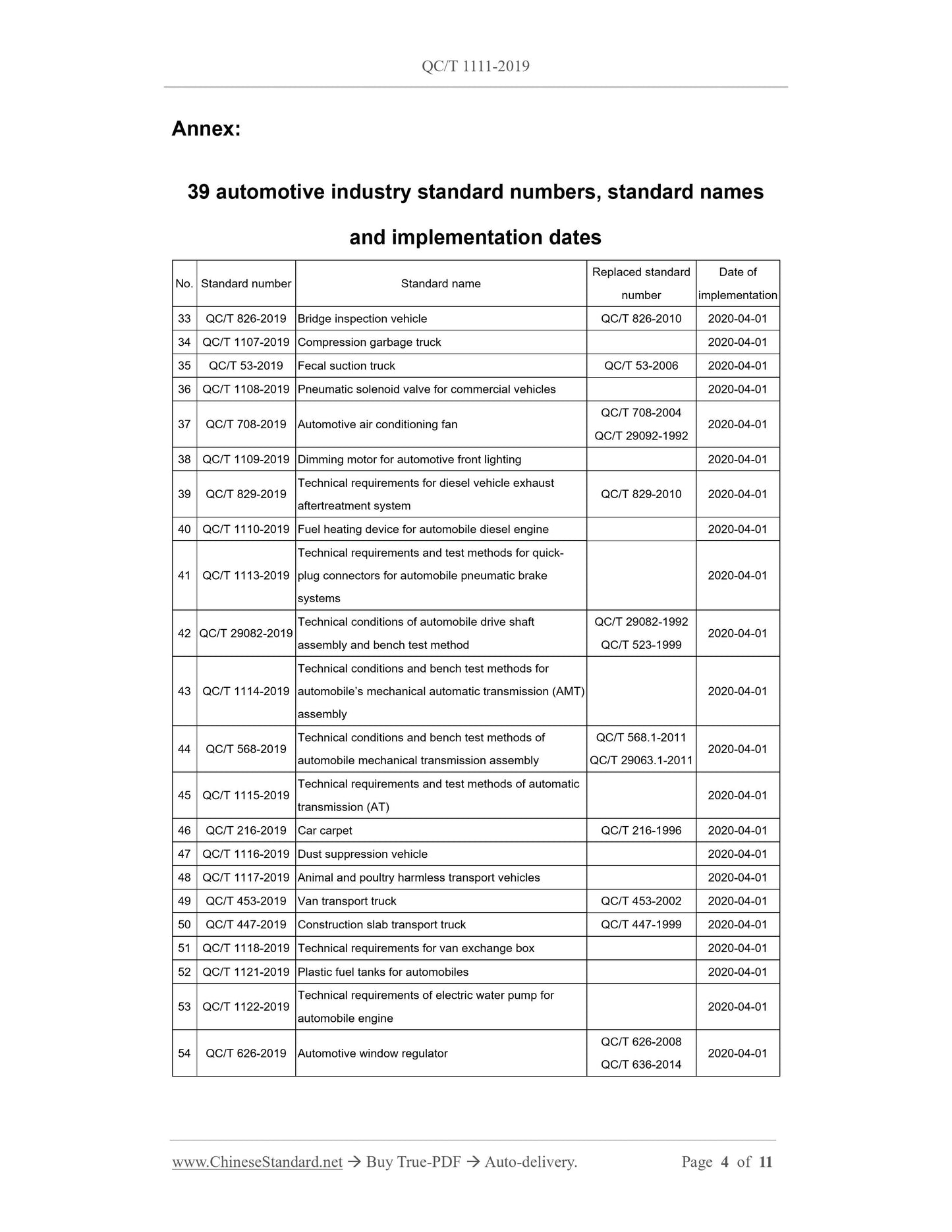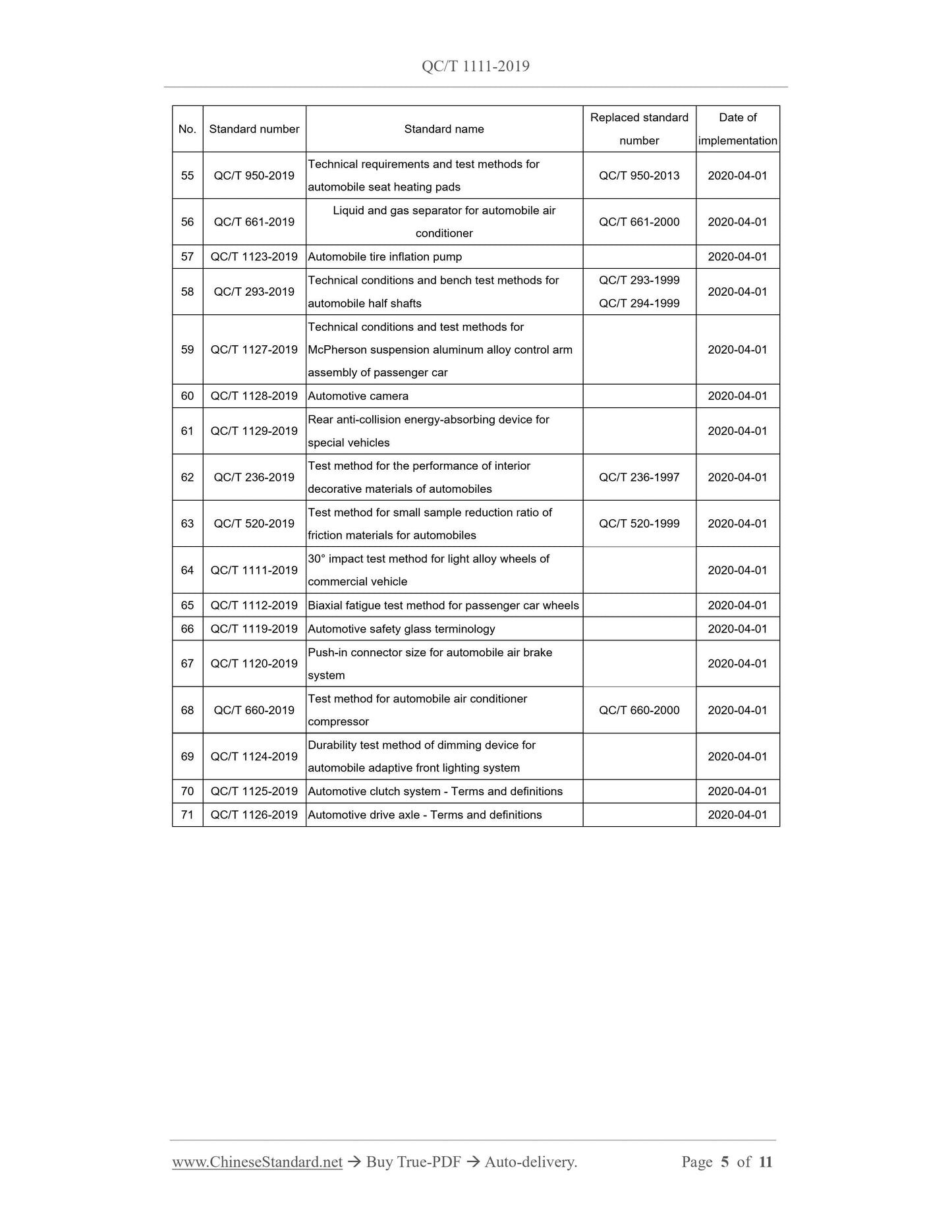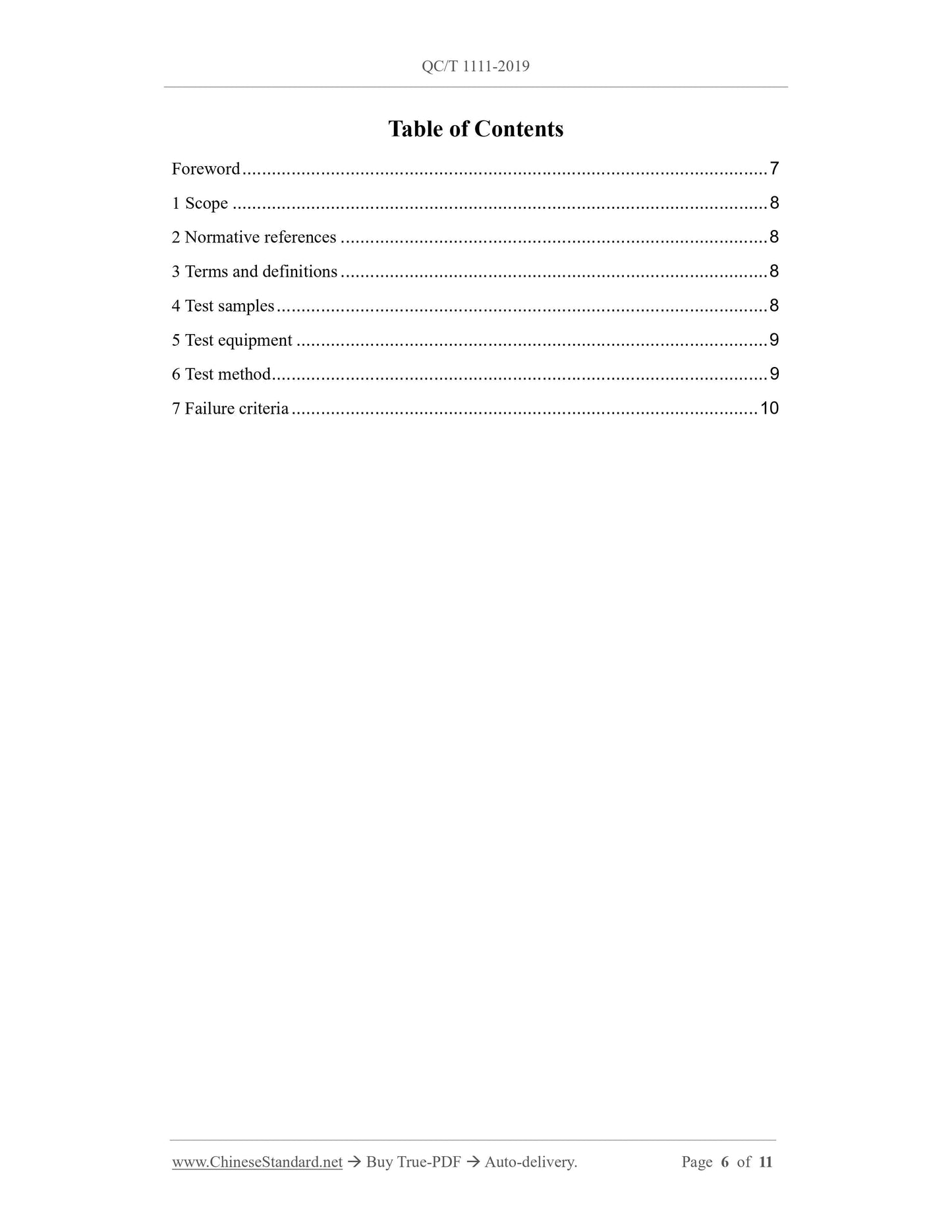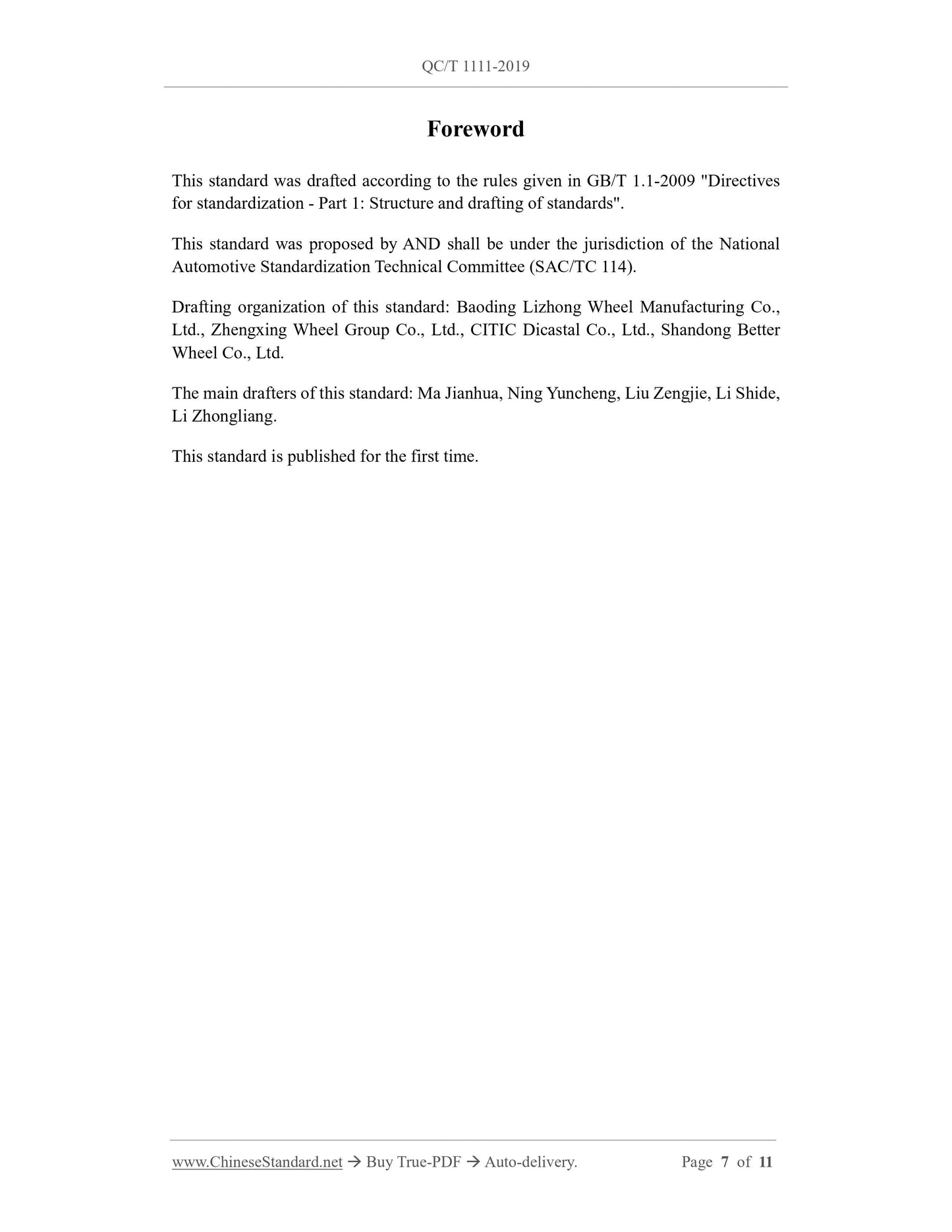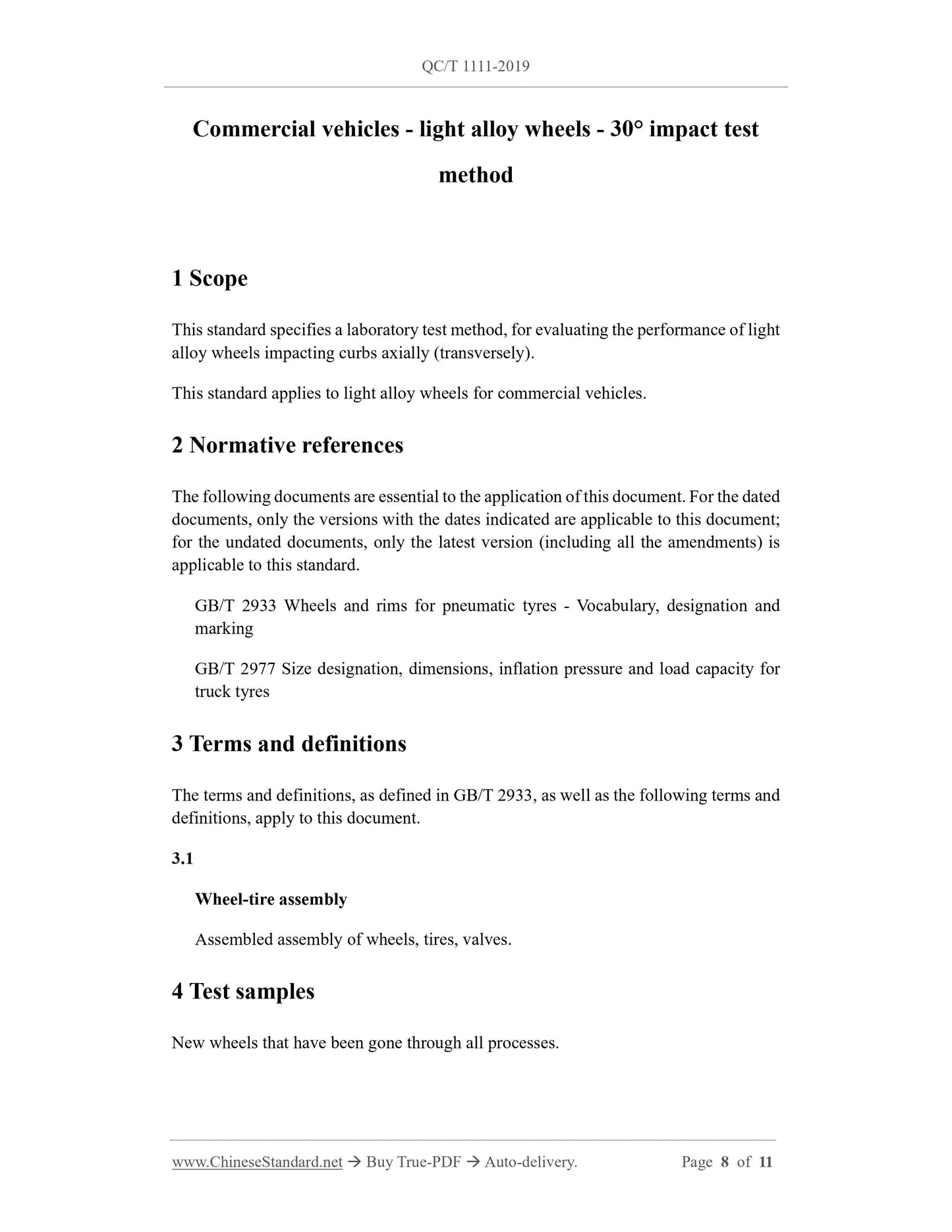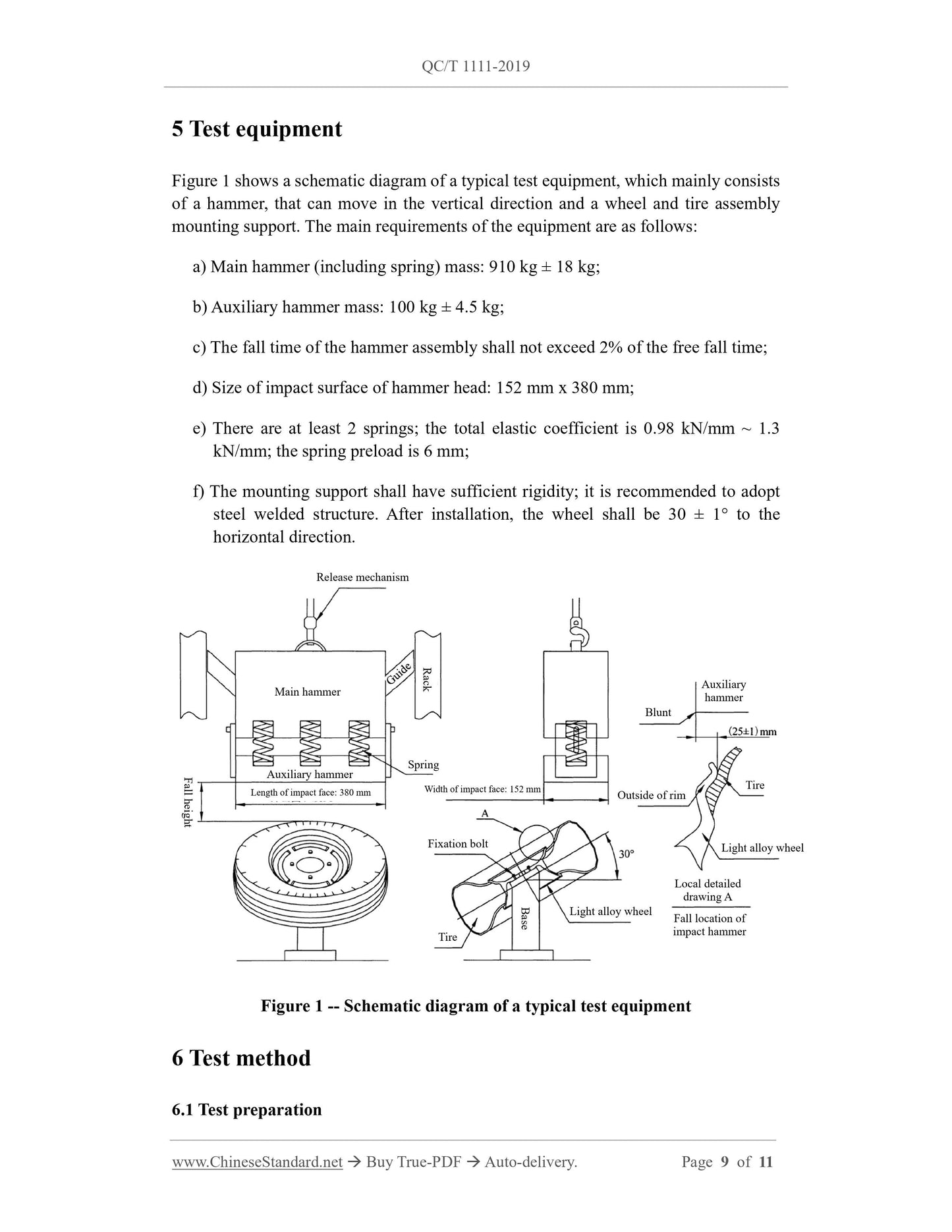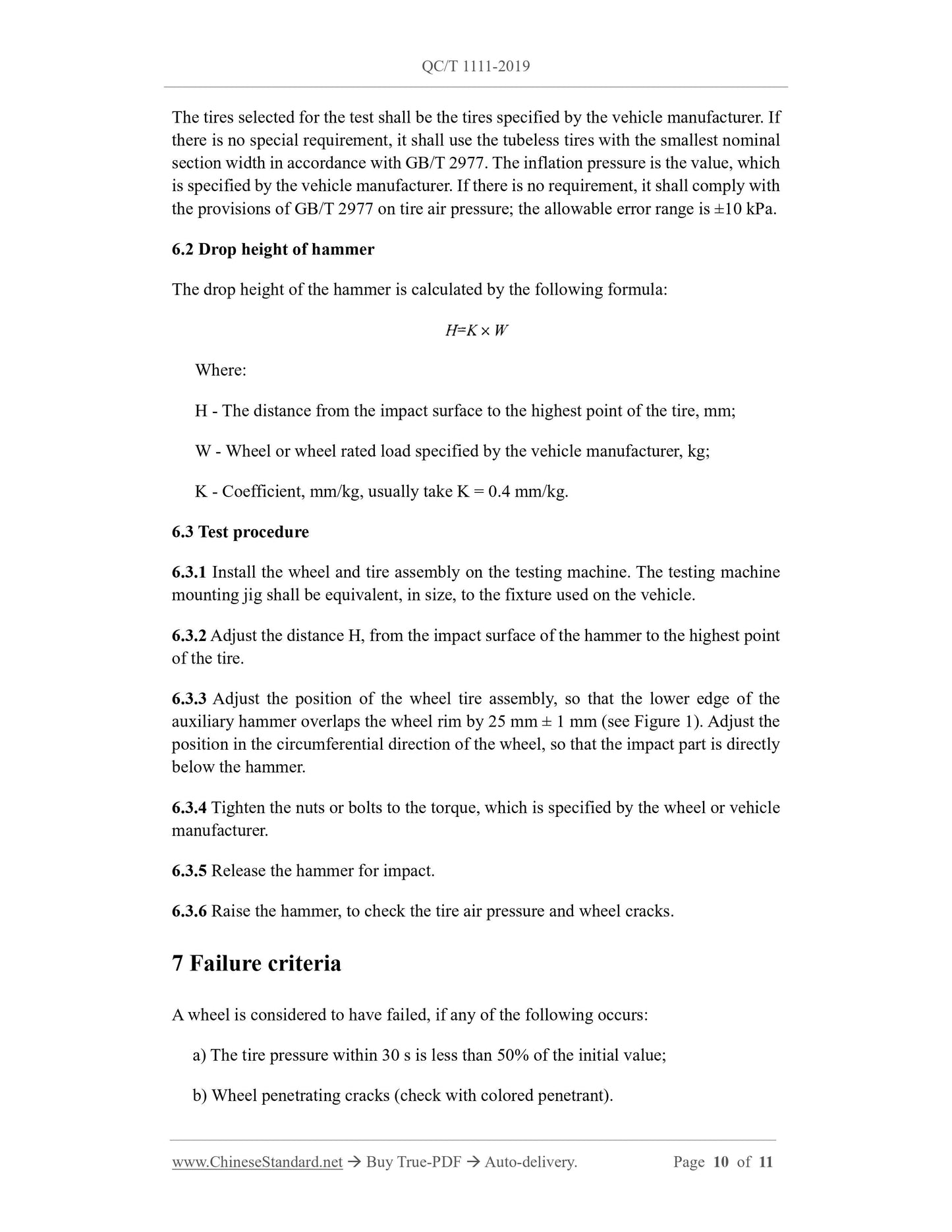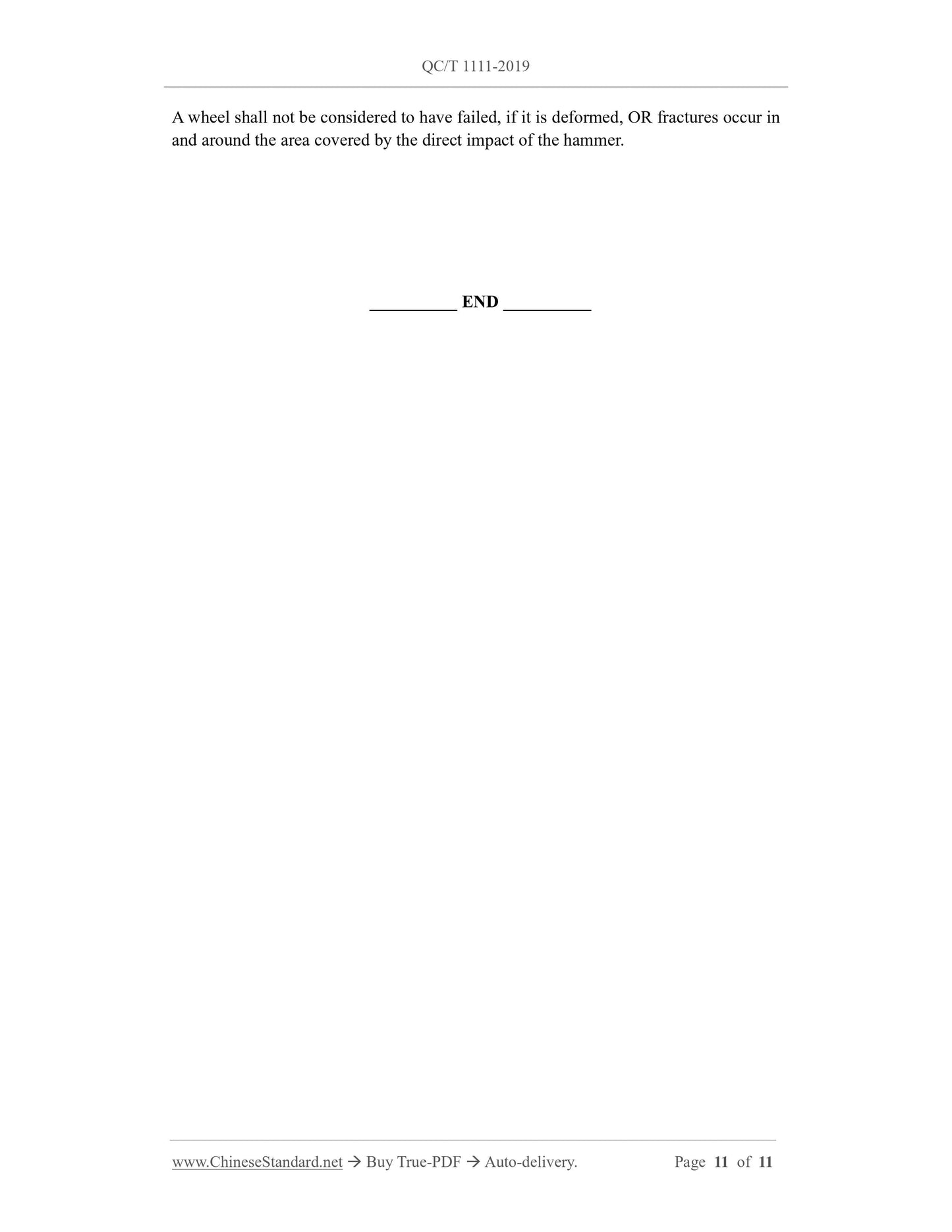1
/
of
11
www.ChineseStandard.us -- Field Test Asia Pte. Ltd.
QC/T 1111-2019 English PDF (QC/T1111-2019)
QC/T 1111-2019 English PDF (QC/T1111-2019)
Regular price
$190.00
Regular price
Sale price
$190.00
Unit price
/
per
Shipping calculated at checkout.
Couldn't load pickup availability
QC/T 1111-2019: Commercial vehicles - Light alloy wheels - 30-degree impact test method
Delivery: 9 seconds. Download (and Email) true-PDF + Invoice.Get Quotation: Click QC/T 1111-2019 (Self-service in 1-minute)
Newer / historical versions: QC/T 1111-2019
Preview True-PDF
Scope
This standard specifies a laboratory test method, for evaluating the performance of lightalloy wheels impacting curbs axially (transversely).
This standard applies to light alloy wheels for commercial vehicles.
Basic Data
| Standard ID | QC/T 1111-2019 (QC/T1111-2019) |
| Description (Translated English) | Commercial vehicles - Light alloy wheels - 30-degree impact test method |
| Sector / Industry | Automobile and Vehicle Industry Standard (Recommended) |
| Classification of Chinese Standard | T22 |
| Classification of International Standard | 43.040.50 |
| Word Count Estimation | 12,190 |
| Date of Issue | 2019 |
| Date of Implementation | 2020-04-01 |
| Issuing agency(ies) | Ministry of Industry and Information Technology |
| Summary | This standard specifies a laboratory test method for evaluating the performance of light alloy wheels in axial (lateral) impact on curbs. This standard applies to light alloy wheels of commercial vehicles. |
Share
